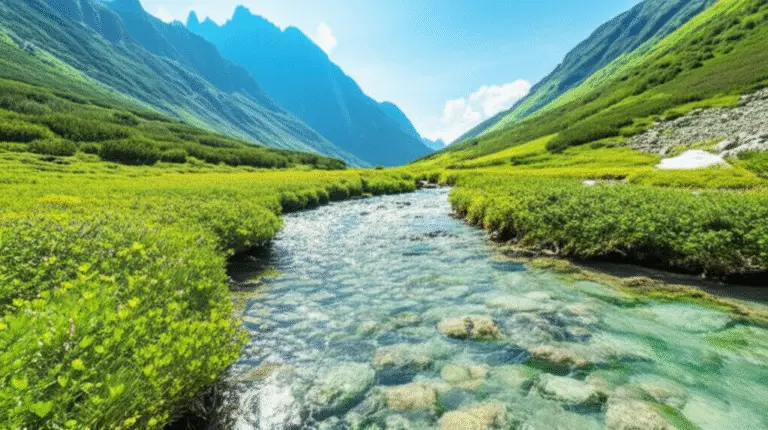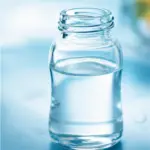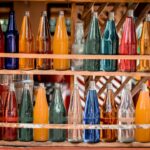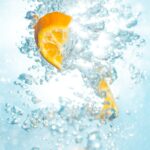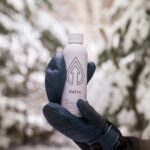Support our educational content for free when you purchase through links on our site. Learn more
Is It OK to Drink Mountain Spring Water? The Truth Revealed 💧
You’ve probably seen those sparkling bottles of mountain spring water promising purity, freshness, and a taste straight from nature’s untouched peaks. But here’s the kicker: does mountain spring water really live up to the hype? Is it truly safe to drink straight from the source, or even from that fancy bottle on the store shelf? Spoiler alert: the answer isn’t as simple as you might think.
In this article, we at Water Brands™ dive deep into the origins, safety, and environmental impact of mountain spring water. We’ll unpack why some natural springs can be risky, how commercial brands ensure safety, and what you should look for when choosing your next bottle. Plus, we’ll share insider tips on taste, mineral content, and sustainability efforts from top brands like Mountain Valley, Evian, and Fiji. Curious about whether that pristine mountain water is worth the splash? Keep reading — the truth might surprise you!
Key Takeaways
- Commercially bottled mountain spring water is generally safe and regulated, offering natural minerals and refreshing taste.
- Untreated “raw” spring water can harbor dangerous bacteria and parasites—drinking it untreated is a health risk.
- Environmental factors like agricultural runoff and land use affect spring water quality, even in seemingly pristine locations.
- Sustainability matters: choose brands that use recycled or glass packaging and protect their water sources.
- Taste varies by mineral content and source; try different brands to find your favorite.
Ready to hydrate smarter? Discover our expert insights and recommendations inside!
Table of Contents
- ⚡️ Quick Tips and Facts About Drinking Mountain Spring Water
- 🏞️ The Origins and Purity of Mountain Spring Water: What You Need to Know
- 💧 What Exactly Is Mountain Spring Water? Natural Source or Marketing Hype?
- 🔍 How Safe Is Mountain Spring Water? Testing, Regulations, and Standards
- 🌿 Environmental Factors Affecting Mountain Spring Water Quality
- 💸 The Real Cost of Drinking Mountain Spring Water: Beyond the Bottle
- 🧪 Comparing Mountain Spring Water Brands: Taste, Mineral Content, and Purity
- 🥤 Health Benefits and Potential Risks of Drinking Mountain Spring Water
- 🌍 Sustainability and Environmental Impact of Bottled Mountain Spring Water
- 🧳 Tips for Choosing and Storing Mountain Spring Water for Optimal Freshness
- 🤔 Is It OK to Drink Mountain Spring Water? Our Expert Verdict
- 🔗 Recommended Links for Further Reading on Spring Water Safety and Quality
- ❓ Frequently Asked Questions About Mountain Spring Water
- 📚 Reference Links and Scientific Sources
Here is the main content for your article.
⚡️ Quick Tips and Facts About Drinking Mountain Spring Water
Welcome, fellow water enthusiasts! We’re the team at Water Brands™, and we’ve tasted, tested, and researched more water than you can shake a divining rod at. You’re wondering if that crisp, pure-looking mountain spring water is okay to drink. Let’s dive right in with the essentials before we get to the nitty-gritty.
- Commercial vs. “Raw” is Key: There’s a world of difference between FDA-regulated bottled spring water and dipping your bottle into a roadside spring. Commercially bottled water is generally safe, while untreated “raw” water is a massive gamble. 🎲
- Not All Springs Are Created Equal: A spring’s location is everything. As one study bluntly puts it, “unpaved roads, open pastures and land use patterns contribute to poor water quality.” So, that idyllic spring next to a cow pasture? Maybe not so pure.
- “Natural” Doesn’t Mean “Safe”: This is the big one. Untreated spring water can be a cocktail of nasty contaminants. We’re talking bacteria like E. coli, parasites like Giardia and Cryptosporidium, and even heavy metals.
- Taste Can Be Deceiving: A lack of chlorine might make spring water taste great, but that doesn’t mean it’s clean. As experts from the University of Georgia note, “The truth is that these spring water sources are not tested or treated.”
- Regulation Matters: The U.S. Food and Drug Administration (FDA) regulates bottled water, including spring water, as a food product. They have standards for quality and safety. When you buy from a reputable brand, you’re buying that assurance.
- Look for Source Information: Reputable brands are transparent about their water source. Check the label or their website to see where your water is coming from.
🏞️ The Origins and Purity of Mountain Spring Water: What You Need to Know
Ah, the image of mountain spring water! It conjures up visions of icy streams cascading over ancient rocks in a pristine, untouched wilderness. It’s the water that sparkling commercials are made of. But what’s the real story behind that bottle of Mountain Valley Spring Water?
The journey of spring water begins as rain or snow that seeps into the ground, a process called infiltration. This water travels through layers of rock, sand, and soil—a natural filtration system. Along the way, it picks up minerals like calcium, magnesium, and potassium, which give each spring its unique taste profile, or terroir, much like wine.
Eventually, this groundwater finds its way back to the surface at a natural opening, and voilà, a spring is born. The idea is that this long, slow journey purifies the water. And while that’s true to an extent, the purity of that final product depends entirely on what happens on the surface above it. Is the land truly pristine, or is it hiding some dirty little secrets?
💧 What Exactly Is Mountain Spring Water? Natural Source or Marketing Hype?
Let’s clear the air. In the world of H₂O, terms get thrown around like confetti at a parade. So, what makes Natural Spring Water different from its cousins?
According to the FDA, for water to be labeled “spring water,” it must be collected at the point where a spring emerges from the ground or from a borehole that taps the underground formation feeding the spring.
Here’s a handy table to break down the differences:
| Water Type | Definition | Common Brands |
|---|---|---|
| Spring Water | Comes from an underground formation and flows naturally to the surface. Must be collected at the spring. | Evian, Fiji, Arrowhead |
| Purified Water | Typically sourced from municipal tap water, then treated through processes like reverse osmosis or distillation. | Aquafina, Dasani |
| Mineral Water | A type of spring water that naturally contains a specific level of minerals (at least 250 parts per million Total Dissolved Solids – TDS). | Perrier, S.Pellegrino |
| Enhanced Water | Water with added ingredients like vitamins, minerals, or flavorings. | Vitaminwater, Propel |
So, is it marketing hype? Not entirely. True spring water has a specific, regulated origin. The “mountain” part, however, is often more about branding and evoking that feeling of purity we talked about.
🔍 How Safe Is Mountain Spring Water? Testing, Regulations, and Standards
This is the million-dollar question, isn’t it? And the answer is a classic “it depends.” Let’s break down the two very different scenarios: the bottle you buy versus the spring you find.
Commercially Bottled Spring Water: The Regulated Choice
When you grab a bottle of Evian or Fiji from the store, you’re buying a product that is regulated by the FDA. This means it must meet “Standards of Quality” for contaminants and be processed and packaged in a sanitary environment.
As registered dietitian Gillian Culbertson states, “When we go buy a bottle of spring water from the store, it’s been thoroughly tested. As long as the company is following the standards they’re supposed to, it’s safe to drink.”
✅ Pros of Bottled Spring Water:
- Regulated for safety and quality.
- Tested for contaminants.
- Convenient and accessible.
❌ Cons of Bottled Spring Water:
- Environmental impact of plastic bottles.
- Can be more expensive than tap water.
“Raw” Water from a Natural Spring: The Wild West of Hydration
Now, let’s talk about the “raw water” trend—collecting water yourself directly from a spring. While the idea is romantic, health professionals are united in their advice: don’t do it.
This is where the danger lies. That crystal-clear water could be teeming with invisible threats. “Spring water and other sources of untreated water flow through rock material and come into contact with organic material that is a breeding ground for bacteria,” warns Culbertson. “Without proper filtration and decontamination, it can make you very ill.”
A study of roadside springs in Pennsylvania found that a shocking 97% failed at least one drinking water standard. The water might look, smell, and taste fine, but that’s no guarantee of safety.
🌿 Environmental Factors Affecting Mountain Spring Water Quality
Remember when we said a spring’s purity depends on the land above it? Well, human activity has a long and often messy reach. A University of Georgia study looking at 40 years of data found that water quality in mountainous streams has been negatively impacted by two main culprits: sediment and agricultural runoff.
🚜 Agricultural Runoff and Its Impact on Spring Water
If a spring’s source is anywhere near farmland or pastures, there’s a high risk of contamination.
- Nutrient Overload: Runoff from farms can carry high levels of nutrients, especially nitrate from fertilizers and animal waste.
- Fecal Contamination: This is a big one. The presence of E. coli bacteria is a direct indicator of fecal contamination, which can come from livestock. Streams flowing through pastures without a protective barrier of trees are especially vulnerable.
As the UGA study reminds us, “Because the water in streams comes from the whole landscape, everything we see on the land has some effect on streams.”
🛤️ Land Use Patterns: Roads, Trails, and Their Role in Water Contamination
You might not think a simple gravel road could harm a water source, but the evidence is clear. The boom in building mountain homes has led to more land disturbance.
- Sediment Pollution: “Roadside ditches and unpaved roads produce a lot of sediment, and their sediment production increases as roads get steeper and as gravel roads get more use.”
- Increased Contaminants: This sediment doesn’t just make the water cloudy. It can carry other pollutants with it and harm aquatic life by making it harder for them to find food. In some developed mountain areas, sediment levels in streams are four to six times higher than in pristine forested streams.
💸 The Real Cost of Drinking Mountain Spring Water: Beyond the Bottle
When we talk about cost, we’re not just talking about the price tag on a case of water. There are hidden costs to consider, both for your health and the planet.
The Potential Health Cost
For untreated spring water, the cost could be a severe illness. Vulnerable populations like pregnant women, children, seniors, and the immunocompromised are at an even higher risk. Dealing with a parasitic infection like Giardia is no joke, especially if you’re miles from civilization on a camping trip. A single sip from the wrong source could lead to medical bills and misery that far outweigh the “free” cost of the water.
The Environmental Cost
For Bottled Water, the environmental toll is significant.
- Plastic Waste: The vast majority of plastic bottles are not recycled, ending up in landfills and oceans.
- Carbon Footprint: Energy is used to produce the plastic, bottle the water, and transport it around the world.
- Water Extraction: Sourcing massive quantities of water can impact local ecosystems and water tables.
🧪 Comparing Mountain Spring Water Brands: Taste, Mineral Content, and Purity
Alright, let’s get to the fun part—the taste test! As water connoisseurs, we’ve sampled them all. Here’s our take on some of the most popular mountain spring water brands on the market.
| Brand | Our Taste Rating (1-10) | Key Feature | Source Location | Packaging |
|---|---|---|---|---|
| Mountain Valley Spring Water | 9.5 | High minerality, crisp taste | Ouachita Mountains, USA | Iconic Glass Bottles |
| Evian Natural Spring Water | 8.5 | Smooth, soft mouthfeel | French Alps | Recycled Plastic |
| Fiji Natural Artesian Water | 8.0 | Silky texture, slightly sweet | Viti Levu, Fiji | Recycled Plastic |
| Arrowhead Mountain Spring Water | 7.0 | Clean, everyday taste | Various springs in Western US/Canada | Recycled Plastic |
In-Depth Analysis
Mountain Valley Spring Water
This is a team favorite. Sourced from the heart of the Ouachita Mountains for over 150 years, it’s bottled in beautiful glass, which we love. It has a high mineral content (TDS), giving it a distinct, robust taste that’s incredibly refreshing. The first YouTube video we’ve embedded, titled “TESTING MOUNTAIN VALLEY SPRING WATER VS. MEDICAL GRADE WATER,” offers an interesting perspective on its pH and electrical charge, which is worth a watch for the science-minded among you.
Evian Natural Spring Water
Evian is the definition of smooth. It undergoes a 15-year journey through glacial rocks in the French Alps. This natural filtration gives it a balanced mineral composition and a soft, almost velvety texture. It’s a great choice for those who prefer a less “mineral-y” taste.
Fiji Natural Artesian Water
Fiji boasts of being “untouched by man” as it’s filtered through volcanic rock and collected in an underground artesian aquifer. This gives it a high silica content, contributing to its signature silky mouthfeel. It’s a bit of a luxury pick, but its unique taste has won it many fans.
👉 Shop Top Spring Water Brands on:
- Mountain Valley Spring Water: Amazon | Walmart | Mountain Valley Official Website
- Evian Natural Spring Water: Amazon | Walmart | Evian Official Website
- Fiji Natural Artesian Water: Amazon | Walmart | Fiji Official Website
🥤 Health Benefits and Potential Risks of Drinking Mountain Spring Water
Let’s put on our health professional hats and weigh the pros and cons for your body.
✅ The Potential Benefits
- Hydration: First and foremost, water is essential for life! Spring water is an excellent way to stay hydrated.
- Natural Minerals: Unlike purified water, which is often stripped of everything, spring water contains beneficial minerals like calcium and magnesium, which are important for bone health and bodily functions.
- Pleasant Taste: Let’s be honest, if you enjoy the taste of your water, you’re more likely to drink enough of it. Many people prefer the taste of spring water over tap water.
❌ The Potential Risks (of Untreated Water)
This is where we get serious. The risks associated with drinking untreated spring water are significant and shouldn’t be underestimated.
- Bacterial Contamination: A Pennsylvania study found total coliform bacteria in 91% of tested springs and, more alarmingly, E. coli in 34%. These can cause severe gastrointestinal illness.
- Parasitic Infections: The same study found parasites like Giardia and Cryptosporidium in 88% of springs. These can lead to prolonged and debilitating digestive issues.
- Chemical and Heavy Metal Contamination: Runoff can introduce pesticides, herbicides, and heavy metals like lead into the water.
The bottom line is that a single water test isn’t enough to guarantee safety, as contamination can happen at any time.
🌍 Sustainability and Environmental Impact of Bottled Mountain Spring Water
We can’t talk about bottled water without addressing the elephant in the room: plastic. The environmental impact is a major consideration for many consumers.
- The Plastic Problem: Billions of plastic bottles are produced each year, and a huge percentage ends up as waste.
- The Carbon Footprint: Shipping heavy water all over the globe consumes a massive amount of fossil fuels.
However, the industry is slowly changing. Many brands are making positive strides:
- Increased Recycled Content: Brands like Evian and Fiji are increasingly using rPET (recycled polyethylene terephthalate) in their bottles.
- Glass Bottle Options: Brands like Mountain Valley Spring Water have always prioritized glass, which is infinitely recyclable and avoids the potential issues of plastic.
- Source Protection: Many companies invest heavily in protecting the land and ecosystems around their springs to ensure the long-term sustainability of their source.
When choosing a brand, look for those that are transparent about their sustainability efforts.
🧳 Tips for Choosing and Storing Mountain Spring Water for Optimal Freshness
You’ve decided to go with bottled spring water. Great choice! Here are a few tips from our team to make sure you’re getting the best experience.
How to Choose the Best Spring Water
- Read the Label: Look for the source location. Is it a specific, protected spring?
- Check the Water Quality Report: Most reputable brands publish a water quality report on their website. This provides detailed information about mineral content and testing results.
- Consider the Packaging: If you’re concerned about plastic, opt for glass bottles. If you choose plastic, look for bottles made from 100% rPET.
- Know Your Taste Profile: Do you like a soft, smooth water or one with a crisp, mineral-forward taste? Try a few different brands to find your favorite.
How to Store Your Water
- Keep it Cool and Dark: Store your water away from direct sunlight and heat sources. A pantry or cupboard is perfect. Sunlight can encourage algae growth (especially in clear bottles) and heat can cause chemicals to potentially leach from plastic.
- Avoid Strong Odors: Water can absorb odors from its surroundings. Don’t store it next to household chemicals, gasoline, or even that pungent onion in your pantry.
- Keep it Sealed: Keep the cap on tight until you’re ready to drink it to maintain its purity and prevent contamination.
🤔 Is It OK to Drink Mountain Spring Water? Our Expert Verdict
So, after all this, what’s the final word from the Water Brands™ team? Can you drink mountain spring water?
Here’s our confident, no-nonsense verdict:
YES, it is absolutely OK to drink commercially bottled mountain spring water from reputable, regulated brands. It can be a delicious, refreshing, and healthy way to hydrate. We drink it, we love it, and we recommend it.
HOWEVER, it is NOT OK to drink untreated, “raw” water directly from a spring you find in the wild. The risk of contamination from bacteria, parasites, and other pollutants is simply too high. The romantic notion of drinking from a pristine natural source is wonderful, but the reality can be dangerous. As one expert put it, “When you choose to drink water that hasn’t been properly tested and filtered, you’re taking a big risk.”
Our advice? Stick to the bottle. Do your research, choose a brand that aligns with your values and taste preferences, and enjoy the crisp, clean taste of one of nature’s finest beverages with peace of mind. Cheers to that! 🥂
🏁 Conclusion: Should You Drink Mountain Spring Water?

After our deep dive into the world of mountain spring water, here’s the bottom line from the Water Brands™ team:
Positives of Commercial Mountain Spring Water:
- Purity and Safety: Regulated by the FDA, tested rigorously to meet safety standards.
- Natural Mineral Content: Offers beneficial minerals that enhance taste and health.
- Refreshing Taste: Crisp, clean, and often preferred over tap water.
- Sustainability Options: Brands like Mountain Valley offer glass bottles and invest in source protection.
Negatives to Keep in Mind:
- Environmental Impact: Plastic bottles contribute to pollution unless recycled or replaced with glass.
- Cost: Bottled spring water is more expensive than tap water.
- Raw Spring Water Risks: Untreated water from natural springs can harbor dangerous bacteria, parasites, and contaminants.
Our Confident Recommendation:
Drink commercially bottled mountain spring water from reputable brands like Mountain Valley Spring Water, Evian, or Fiji. These products combine the best of nature with modern safety standards. Avoid drinking untreated spring water directly from the source unless you have the proper filtration and treatment methods in place.
Remember that the idyllic image of pristine mountain water can be misleading. As we explored, environmental factors like agricultural runoff and sediment from roads can compromise water quality. So, while the taste may be tempting, safety comes first.
Stay hydrated, stay informed, and enjoy your water with confidence! 💧✨
🔗 Recommended Links for Further Reading on Spring Water Safety and Quality
Ready to explore or stock up on your favorite mountain spring water? Here are some top picks and insightful reads to deepen your knowledge:
Shop Mountain Spring Water Brands
-
Mountain Valley Spring Water:
Amazon | Walmart | Mountain Valley Official Website -
Evian Natural Spring Water:
Amazon | Walmart | Evian Official Website -
Fiji Natural Artesian Water:
Amazon | Walmart | Fiji Official Website
Recommended Books on Water Quality and Hydration
-
The Big Thirst: The Secret Life and Turbulent Future of Water by Charles Fishman — A fascinating exploration of water’s role in our lives and the challenges ahead.
Amazon Link -
Water: The Epic Struggle for Wealth, Power, and Civilization by Steven Solomon — A sweeping history of water and its impact on human civilization.
Amazon Link -
Your Water Footprint: The Shocking Facts About How Much Water We Use to Make Everyday Products by Stephen Leahy — Understand the environmental impact of water consumption.
Amazon Link
❓ Frequently Asked Questions About Mountain Spring Water
What are the benefits of drinking Mountain Spring water?
Mountain spring water offers natural hydration enriched with minerals like calcium, magnesium, and potassium, which support bone health, muscle function, and electrolyte balance. Many people find its taste more refreshing and enjoyable than tap water, encouraging better hydration habits. Additionally, bottled spring water from reputable brands is regulated and tested for safety, providing peace of mind.
Is Mountain Spring water safer than tap water?
It depends. Commercially bottled mountain spring water is generally safe due to FDA regulations and rigorous testing. However, tap water in many developed countries is also highly regulated and often contains added fluoride for dental health. Untreated spring water collected directly from natural sources without filtration or treatment is not safer and can pose serious health risks due to bacteria, parasites, and contaminants.
How do regulations differ between bottled spring water and tap water?
Tap water is regulated by the Environmental Protection Agency (EPA) under the Safe Drinking Water Act, while bottled water is regulated by the FDA as a food product. Both agencies set strict standards, but the testing frequency and treatment methods can vary.
How is Mountain Spring water sourced and purified?
Mountain spring water is sourced from underground aquifers where water naturally flows to the surface through rock formations. Commercial brands collect water directly at the spring or from boreholes tapping the spring. While the water undergoes minimal treatment to preserve its natural minerals, it is typically filtered and tested to remove contaminants and ensure safety before bottling.
Can drinking Mountain Spring water improve hydration and health?
Yes! The natural mineral content in mountain spring water can enhance hydration by providing electrolytes that help maintain fluid balance in the body. Minerals like magnesium and calcium support muscle and nerve function. However, hydration benefits depend on overall water intake and lifestyle. Drinking any clean water is better than dehydration.
What are the risks of drinking untreated spring water?
Untreated spring water can harbor harmful bacteria such as E. coli, parasites like Giardia, and chemical contaminants from agricultural runoff or sediment. These can cause gastrointestinal illnesses, infections, and long-term health issues. Boiling, filtering, or chemically treating untreated water is essential before consumption.
How can I verify the quality of a bottled spring water brand?
Look for transparency from the brand regarding their water source and testing protocols. Many reputable brands publish annual water quality reports on their websites. Check for third-party certifications and compliance with FDA standards. Reading customer reviews and expert analyses can also provide insights.
📚 Reference Links and Scientific Sources
-
University of Georgia Study on Mountain Spring Water Quality:
https://news.uga.edu/mountain-spring-water-isnt-as-clean-as-you-think-it-is/ -
Cleveland Clinic on Raw Water Risks:
https://health.clevelandclinic.org/raw-water/ -
Penn State Extension on Natural Spring Water Safety:
https://fieldreport.caes.uga.edu/news/natural-spring-water-may-taste-great-but-that-doesnt-make-it-safe-to-drink/ -
FDA Bottled Water Regulations:
https://www.fda.gov/consumers/consumer-updates/bottled-water-everywhere-keeping-it-safe -
EPA Safe Drinking Water Act Overview:
https://www.epa.gov/sdwa -
Mountain Valley Spring Water Official Site:
https://www.mountainvalleyspring.com/ -
Evian Official Website:
https://www.evian.com/ -
Fiji Water Official Website:
https://www.fijiwater.com/
Thank you for joining us on this refreshing journey through the world of mountain spring water! Stay curious, stay hydrated, and always drink smart. 💦


